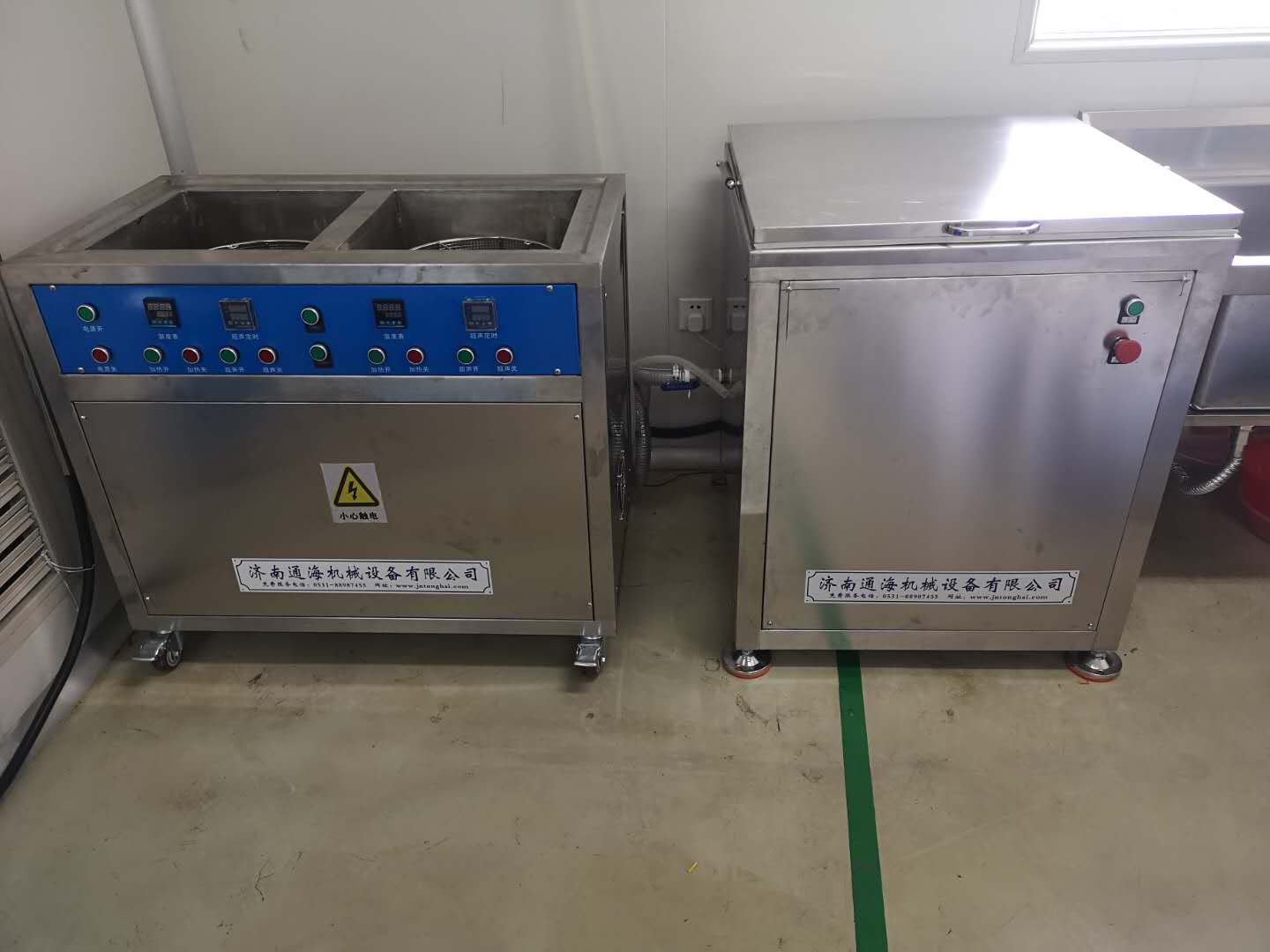
超声波清洗机的QDR清洗工艺流程介绍
作者:admin来源:http://www.jnthcsb.com/时间:2021-05-28
一、喷淋清洗
1、 Spray cleaning
上喷淋管路共有两路,形成相互交叉喷淋,但去离子水不宜直接喷淋冲洗晶圆表面,因晶圆在水蚀作用下直接喷淋晶圆表面,易产生微粒污泥而污染晶圆表面,因此,在去离子水的喷淋过程中,需要对冲洗水压、水量、方向和角度作出调整测试,以达到微粒污染少的较好效果。 良好的喷嘴所喷淋范围涵盖全部晶圆及片盒; 而不良的喷淋冲洗形状,没有涵盖全部晶圆及片盒,未被喷淋冲洗的死角地带,微粒、杂质及化学药液残留含量仍然很高,而达不到良好的清洗效果。
There are two paths in the upper spray pipeline to form cross spray, but it is not suitable to spray deionized water directly to wash the wafer surface. Because the wafer is directly sprayed on the wafer surface under the action of water erosion, it is easy to produce particulate sludge and pollute the wafer surface. Therefore, in the process of spraying deionized water, it is necessary to adjust and test the flushing water pressure, water volume, direction and angle, In order to achieve the better effect of less particle pollution. The spray range of a good nozzle covers all wafers and cassettes; However, the poor spray washing shape does not cover all the wafers and cassettes, and the content of particles, impurities and chemical residues is still very high in the non spray washing dead area, which can not achieve good cleaning effect.
二、鼓泡冲浪清洗
2、 Bubble surf cleaning
上喷淋同时,下喷淋管路由底部两侧不断进水,而后由内槽上沿四周溢出,这样,每个晶圆片缝、各处边角的去离子水都能连续得到更新。 同时,纯净气体(氮气或压缩空气)由下喷淋管路进入槽体。鼓泡有以下几个作用:
At the same time, water continuously enters the bottom of the lower spray pipe, and then overflows from the top of the inner groove, so that the deionized water in each wafer slot and each corner can be continuously updated. At the same time, the pure gas (nitrogen or compressed air) enters the tank through the lower spray pipe. Bubbling has the following functions:

(1)增加了去离子水的冲刷力,对槽体本身有很好的自清洗作用;
(1) It increases the scouring force of deionized water and has a good self-cleaning effect on the tank itself;
(2)晶圆在水流中颤动,气泡不能沾附其上,提高了冲洗效果;
(2) The wafers vibrate in the water and the bubbles can't adhere to them, which improves the washing effect;
(3)氮气鼓泡减少去离子水中的含氧量,避免在晶圆表面生成氧化物。
(3) Nitrogen bubbling reduces oxygen content in deionized water and avoids oxide formation on wafer surface.
三、超声波清洗
3、 Ultrasonic cleaning
苏州富怡达超声波有限公司的QDR增加了超声波功能选项,与鼓泡冲浪清洗交替作用,极大的提高了清洗效率,并有效降低DI水的消耗量。典型的应用方法是:上喷淋+排放→上喷淋+下进水→超声+上喷淋+溢流→鼓泡+上喷淋+溢流→快排放
The QDR of Suzhou fuyida ultrasonic Co., Ltd. has added ultrasonic function option, which alternates with bubble surfing cleaning, greatly improving cleaning efficiency and effectively reducing DI water consumption. The typical application method is: upper spray + discharge → upper spray + lower water inflow → ultrasonic + upper spray + overflow → bubbling + upper spray + overflow → fast discharge
四、快冲快排
4、 Let's go, let's go
喷淋注满水时间和排水时间,对晶圆清洗质量有很大影响。 因晶圆表面暴露在空气中会接触空气中的氧分子或水汽,在常温下,即会生长一层很薄的氧化层(约为 0.5~1 nm),这层自然氧化物的厚度与暴露在空气中的时间长短有关, 因此,喷淋注满水时间越长,晶圆暴露在空气中的时间就会越长,因而形成的氧化层也越厚,这对晶圆清洗,是很不利的。 QDR 排水的时间越短,排水流速就会越大,有利于去离子水带走晶圆表面上的微粒杂质。因此,在 QDR 设计中,要尽可能的缩短喷淋注满水时间和排水时间,实现快冲快排,整体效率也会得到提高。富怡达超声波的QDR快排及注水时间指标为:注入时间:≤120秒,排放时间:≤12秒。
The filling time and draining time of spray have great influence on wafer cleaning quality. Because the wafer surface is exposed to the air, it will contact the oxygen molecules or water vapor in the air. At room temperature, a thin oxide layer (about 0.5 ~ 1 nm) will grow. The thickness of this layer of natural oxide is related to the time of exposure to the air. Therefore, the longer the spraying time is, the longer the wafer will be exposed to the air, and the thicker the oxide layer will be, This is bad for wafer cleaning. The shorter the QDR drainage time, the higher the drainage flow rate, which is conducive to deionized water to remove the particles on the wafer surface. Therefore, in the QDR design, it is necessary to shorten the spray filling time and drainage time as much as possible, realize fast flushing and fast drainage, and improve the overall efficiency. The QDR quick discharge and water injection time indexes of fuyida ultrasonic are: injection time: ≤ 120 seconds, discharge time: ≤ 12 seconds.
推荐文章
 公司:济南科尔超声波设备有限公司
公司:济南科尔超声波设备有限公司  热线:18663767799
热线:18663767799 地址:山东省济南市济阳区创业路与启航街交叉口南40米
地址:山东省济南市济阳区创业路与启航街交叉口南40米








 常见问题
常见问题

 联系我们
联系我们
 咨询电话:18663767799
咨询电话:18663767799 E-MAIL:jnkergs@163.com
E-MAIL:jnkergs@163.com 地址:山东省济南市济阳区创业路与启航街交叉口南40米
地址:山东省济南市济阳区创业路与启航街交叉口南40米 鲁公网安备 37011202001385号
鲁公网安备 37011202001385号
